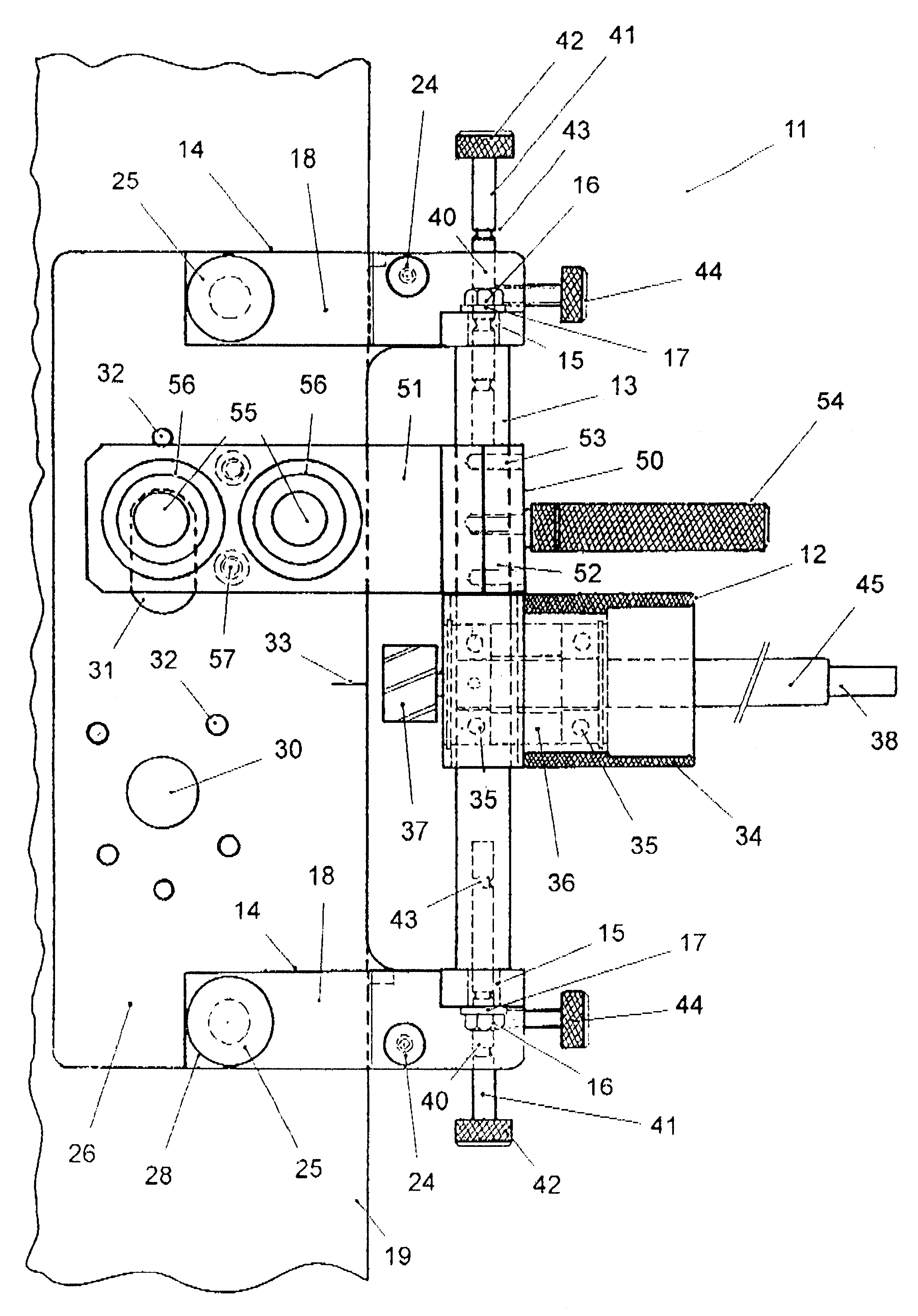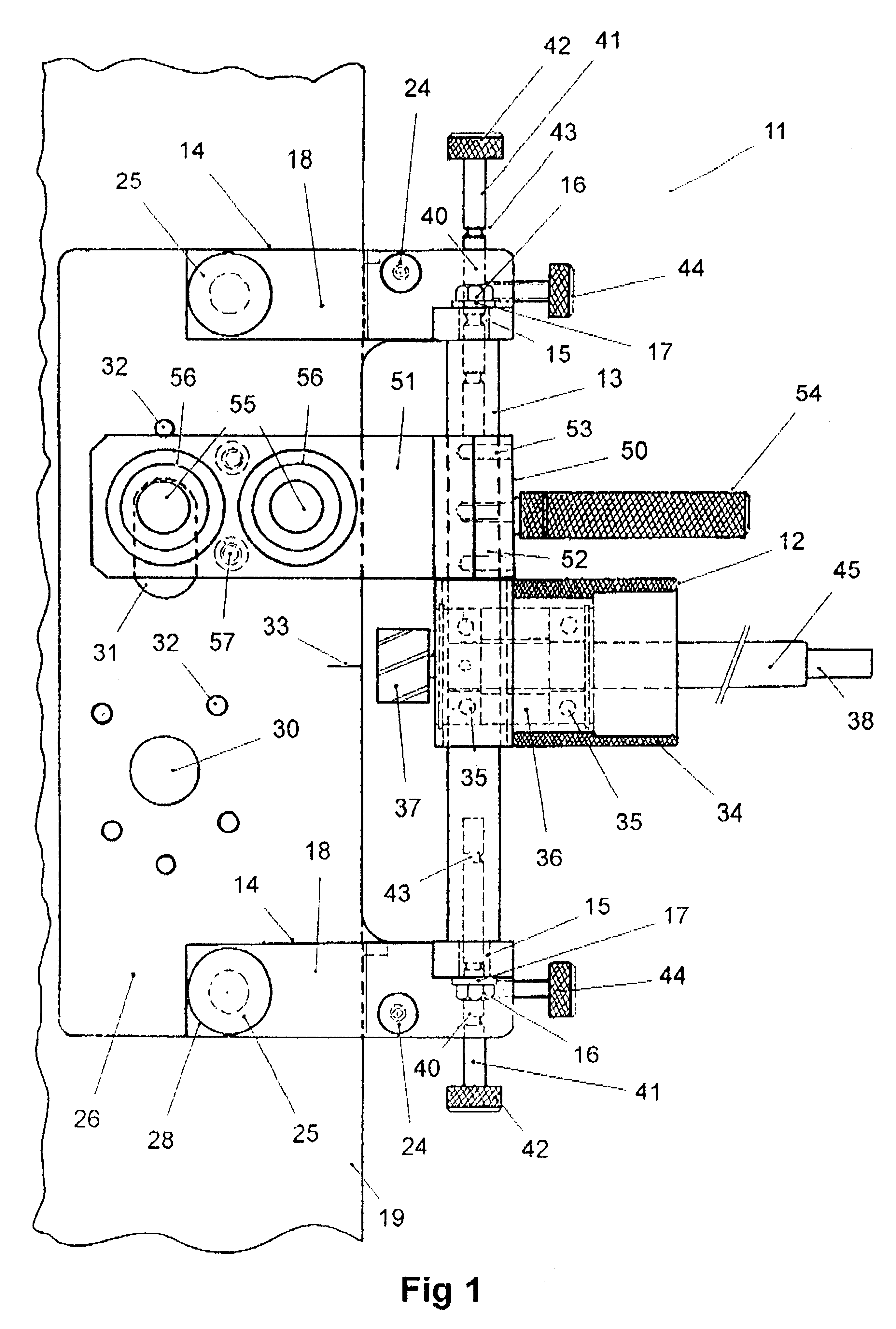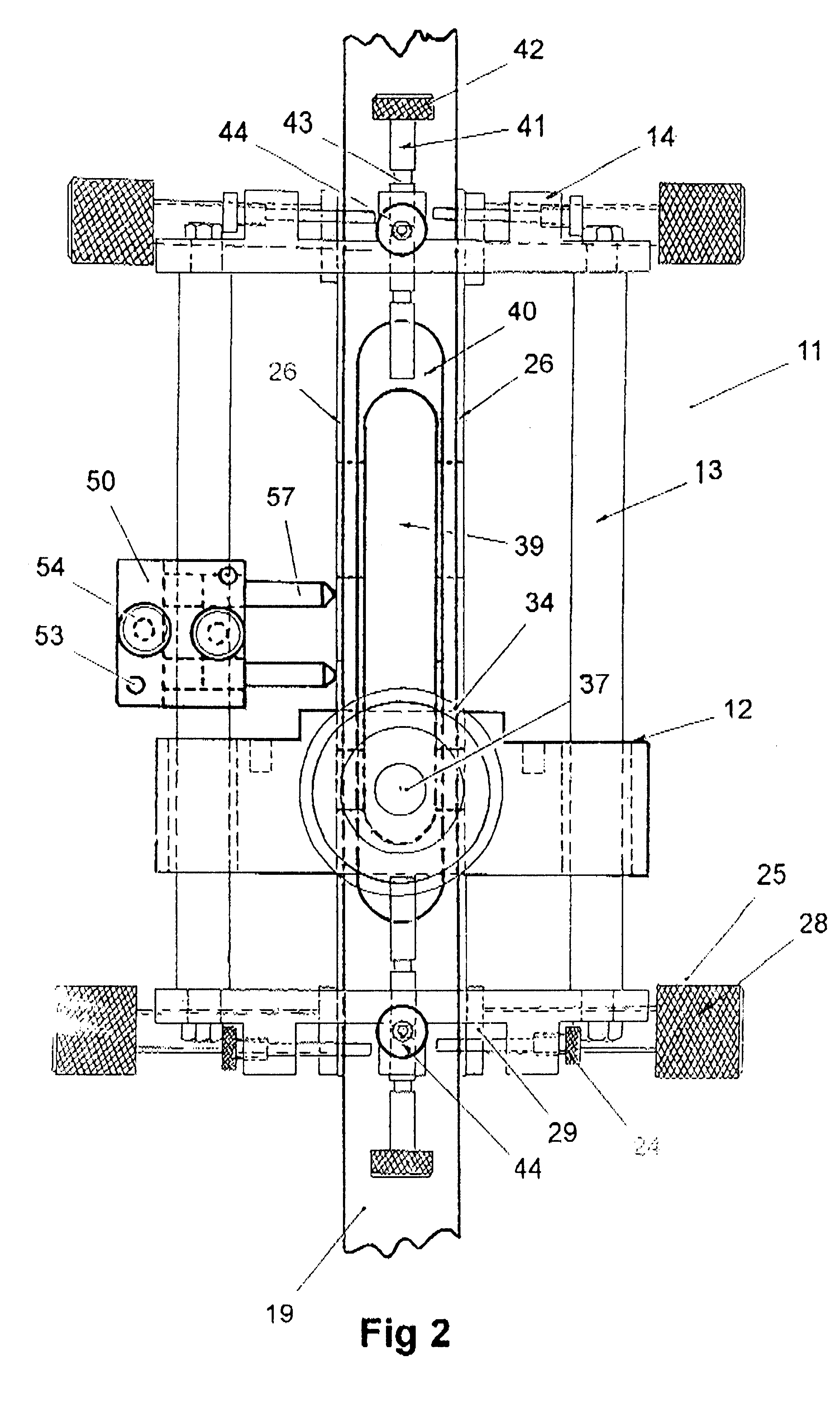Jig for fitting locks to doors
a technology for fitting locks and doors, which is applied in the direction of sawing apparatus, drilling machines, instruments, etc., can solve the problems of easy movement during marking operations, inability to guarantee the accuracy of subsequent drilling or other operations, and time-consuming operation of fixing a mortise lock or a cylindrical lock to a door, so as to facilitate the alignment of the jig and eliminate the damage to the door
- Summary
- Abstract
- Description
- Claims
- Application Information
AI Technical Summary
Benefits of technology
Problems solved by technology
Method used
Image
Examples
Embodiment Construction
Referring generally to FIGS. 1 and 2 there is illustrated a jig, generally referenced 11, for preparing a door to receive a lock, in this case a mortise lock (not illustrated), according to a preferred embodiment of the invention.
Jig 11, comprises a sliding block 12, mounted on a pair of support rails 13, which extend between and are fixedly attached to a pair of fork members 14. The detail of the fork members 14 on their own is also shown in FIG. 3. The fork members 14 are provided with holes 15 through which the ends of the support shafts 13 are attached to the fork members 14 by means of nuts 16 and washers 17.
The fork members 14, each have a pair of arms 18 which extend in use over the surface of a door 19 to which the jig 11 is to be fitted. Located centrally between the respective arm 18 of each of the fork members 14 is a central portion 20 which is provided at its upper extremity with a v-shaped portion 21 which acts as a centring guide and which in use prevents the bulk of ...
PUM
| Property | Measurement | Unit |
|---|---|---|
| Length | aaaaa | aaaaa |
| Width | aaaaa | aaaaa |
| Distance | aaaaa | aaaaa |
Abstract
Description
Claims
Application Information
 Login to View More
Login to View More - R&D
- Intellectual Property
- Life Sciences
- Materials
- Tech Scout
- Unparalleled Data Quality
- Higher Quality Content
- 60% Fewer Hallucinations
Browse by: Latest US Patents, China's latest patents, Technical Efficacy Thesaurus, Application Domain, Technology Topic, Popular Technical Reports.
© 2025 PatSnap. All rights reserved.Legal|Privacy policy|Modern Slavery Act Transparency Statement|Sitemap|About US| Contact US: help@patsnap.com



